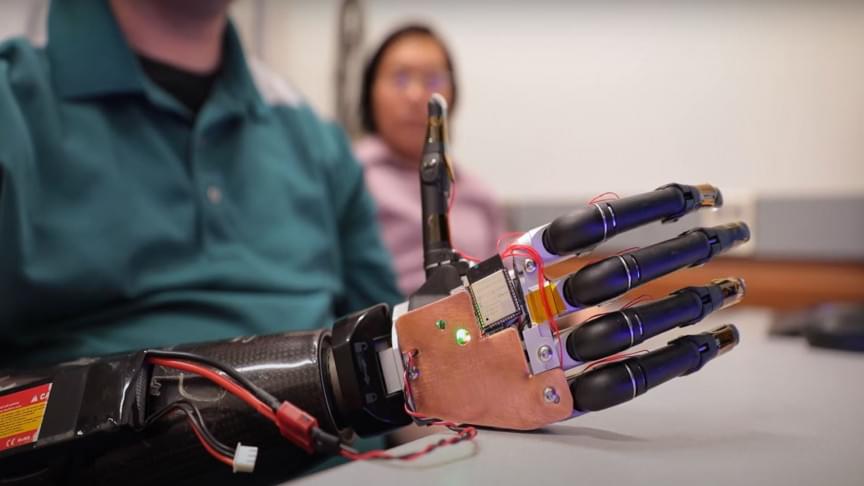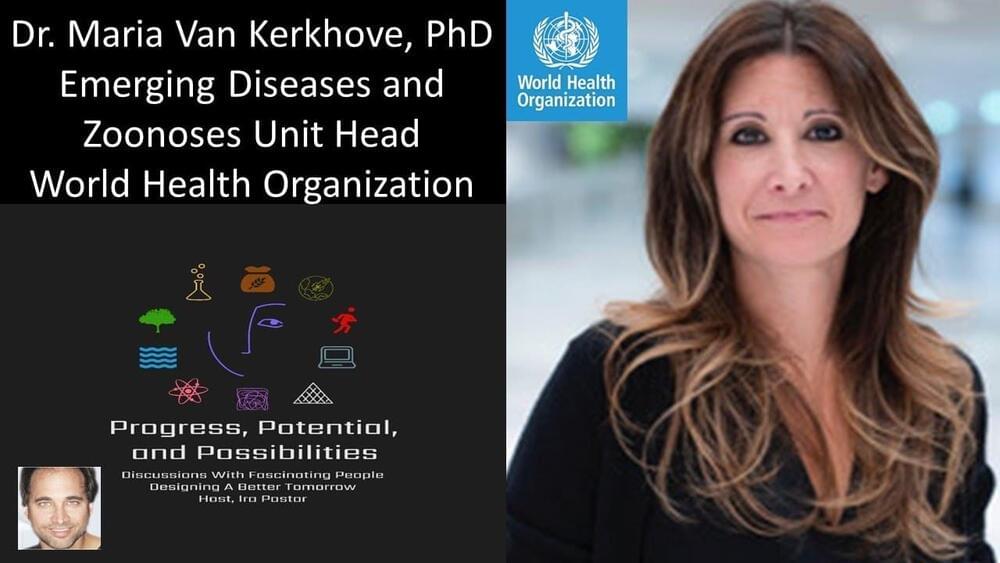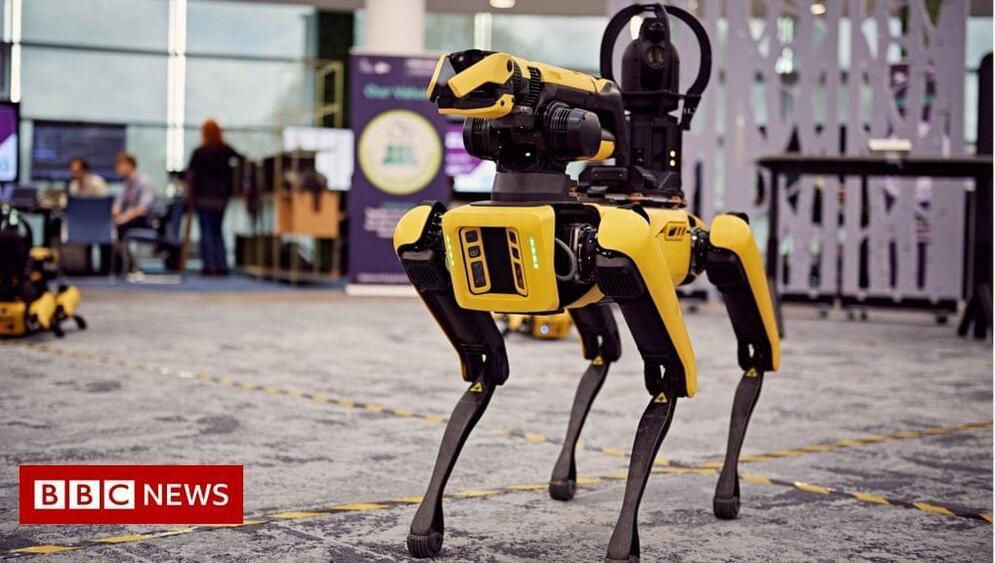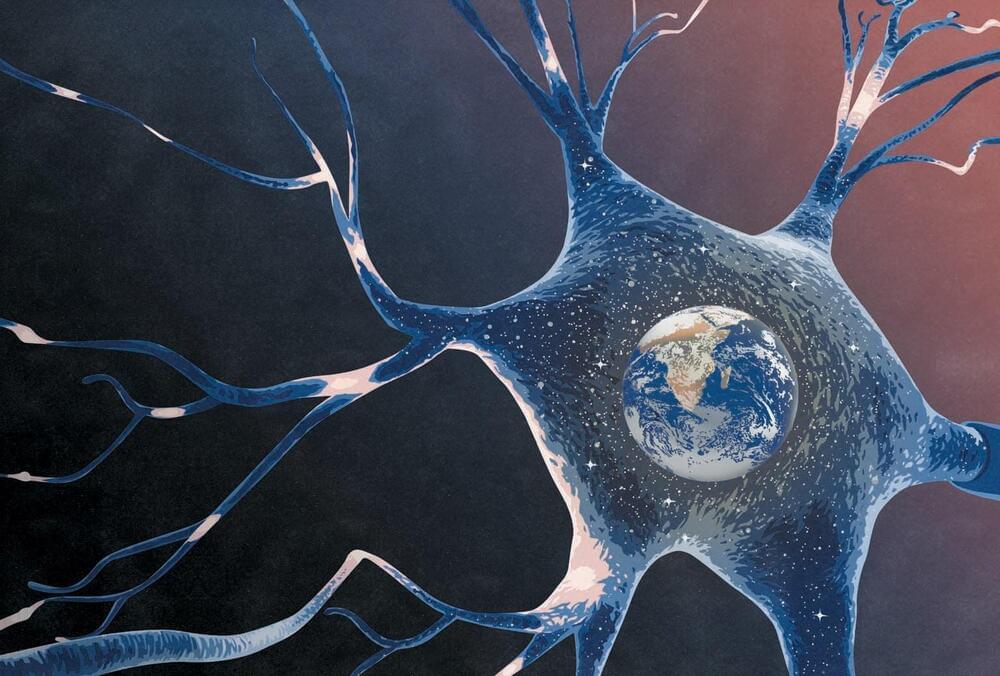Page 5167
May 20, 2022
The highest quality images of the Earth’s interior have just been captured
Posted by Gemechu Taye in category: futurism
May 20, 2022
Scientists develop real-life mind controllable robotic hand using AI
Posted by Gemechu Taye in categories: biotech/medical, cyborgs, robotics/AI

This AI powered prosthetic arm understands what you think. Muscle-controlled prosthetic limbs that patients with amputations across the globe currently use have various limitations and challenges. Good quality prosthetics parts are cumbersome, come with a complex setup, and require patients to undergo training for several months to learn their use. Interestingly, a new technology proposed by a team of researchers at the University of Minnesota (UMN) can overcome all such challenges.
It may sound like science-fiction, but the researchers claim that the new technology would allow patients to control robotic body parts using their thoughts. By employing artificial intelligence and machine learning, the researchers at UMN have developed a portable neuroprosthetic hand. The robotic hand comes equipped with a nerve implant linked to the peripheral nerve in a patient’s arm.
Continue reading “Scientists develop real-life mind controllable robotic hand using AI” »
Second time’s the charm.
Orbital Flight Test-2 will test @BoeingSpace’s #Starliner spacecraft from launch to docking to return to Earth, providing data to prove it’s ready to fly astronauts. What you need to know: https://go.nasa.gov/3sNEGlI.
Watch starting at 6pm ET (22:00 UTC): https://go.nasa.gov/3NlzX2o
May 20, 2022
Where are the Leaders to Meet the Challenges of the 21st Century?
Posted by Len Rosen in category: futurism
Progress on reducing carbon emissions has been slow making achieving interim 2030 targets elusive, let alone hitting net-zero by 2050.
May 20, 2022
Dr. Maria Van Kerkhove, PhD — Emerging Diseases and Zoonoses Unit Head — World Health Organization
Posted by Ira S. Pastor in categories: biological, biotech/medical, health

Preparedness For Emerging Diseases & Zoonoses — Dr. Maria Van Kerkhove, Ph.D., Emerging Diseases and Zoonoses Unit Head, World Health Organization, (WHO)
Dr. Maria Van Kerkhove, Ph.D., (https://www.imperial.ac.uk/people/m.vankerkhove) is an infectious disease epidemiologist who serves as the technical lead for the COVID-19 response at the World Health Organization (https://www.who.int/en/), where she develops guidance, training programs, and information products for the continuously evolving state of the pandemic, as well serving as the Emerging Diseases and Zoonoses Unit Head.
May 20, 2022
Robot Dog Olympics takes place at MoD in Bristol
Posted by Dan Kummer in category: robotics/AI
Coders gather in Bristol to program robots to sprint and do gymnastics at the Ministry of Defence event.
May 20, 2022
On the Edge of Chaos: Why Your Brain Balances on a High Wire
Posted by Dan Kummer in category: neuroscience
May 20, 2022
Control of mechanical quantum resonators reaches new levels of precision
Posted by Dan Breeden in categories: energy, quantum physics
Just as electromagnetic energy is quantized into propagating photons, acoustic energy propagates in quanta called phonons. The science of photon behaviour – called quantum electrodynamics – is an important branch of modern physics because it provides a relativistic description of the interaction of light with matter. Scientists have used the theory in a variety of applications such as atomic clocks and quantum computation. In recent years, scientists have begun applying some of the same concepts to phonons in a field called quantum acoustodynamics. Last year, for example, two groups independently used laser-based measurements to entangle the oscillations of membranes in cavities.
May 20, 2022
How the Brain ‘Constructs’ the Outside World
Posted by Kelvin Dafiaghor in category: neuroscience
Like other young researchers, I began my investigation of the brain without worrying much whether this perception-action theoretical framework was right or wrong. I was happy for many years with my own progress and the spectacular discoveries that gradually evolved into what became known in the 1960s as the field of “neuroscience.” Yet my inability to give satisfactory answers to the legitimate questions of my smartest students has haunted me ever since. I had to wrestle with the difficulty of trying to explain something that I didn’t really understand.
Over the years I realized that this frustration was not uniquely my own. Many of my colleagues, whether they admitted it or not, felt the same way. There was a bright side, though, because these frustrations energized my career. They nudged me over the years to develop a perspective that provides an alternative description of how the brain interacts with the outside world.
The challenge for me and other neuroscientists involves the weighty question of what, exactly, is the mind. Ever since the time of Aristotle, thinkers have assumed that the soul or the mind is initially a blank slate, a tabula rasa on which experiences are painted. This view has influenced thinking in Christian and Persian philosophies, British empiricism and Marxist doctrine. In the past century it has also permeated psychology and cognitive science. This “outside-in” view portrays the mind as a tool for learning about the true nature of the world. The alternative view—one that has defined my research—asserts that the primary preoccupation of brain networks is to maintain their own internal dynamics and perpetually generate myriad nonsensical patterns of neural activity. When a seemingly random action offers a benefit to the organism’s survival, the neuronal pattern leading to that action gains meaning. When an infant utters “te-te,” the parent happily offers the baby “Teddy,” so the sound “te-te” acquires the meaning of the Teddy bear. Recent progress in neuroscience has lent support to this framework.















